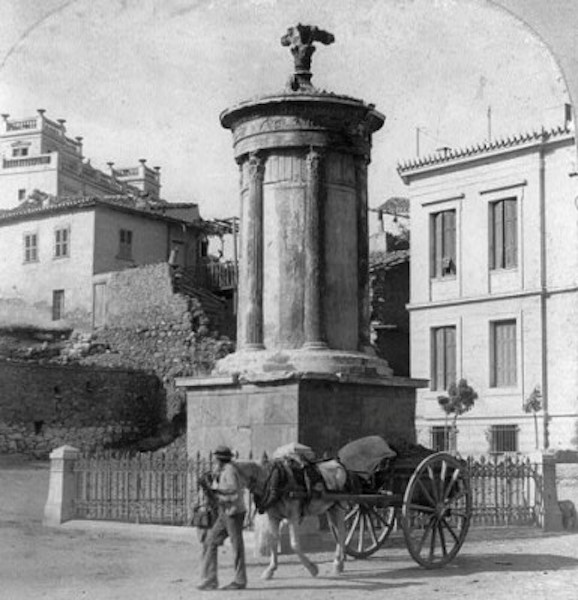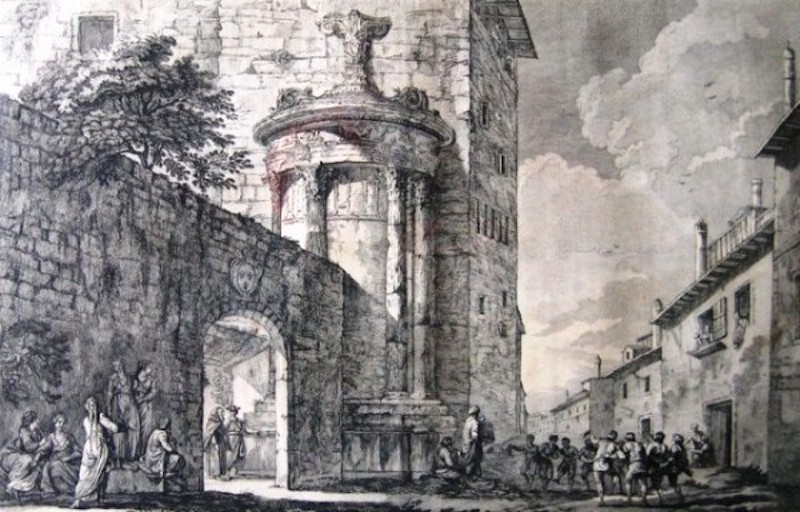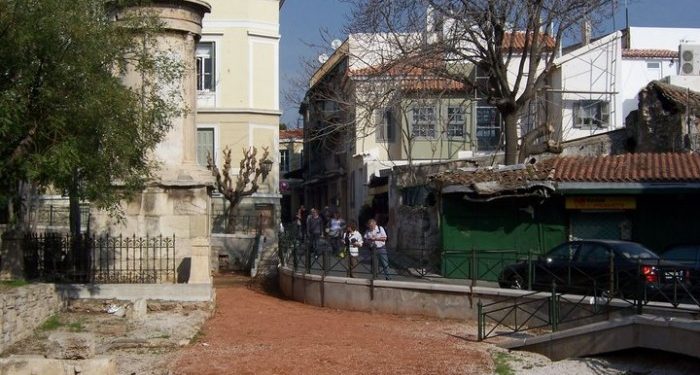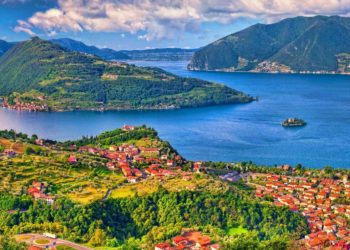The oldest street in Athens, and the whole of Europe, is about 2,500 years old and is located in the Plaka neighborhood in the slopes of Acropolis Hill.
A large part of today’s Tripodon Street is a continuation of the ancient one and maintains the same name. The fact is mentioned in the Guinness Book of World Records.
Tripodon Street was one of the widest streets in ancient Athens, six meters (about 18 feet) wide, and was the shortest way to go from the Theater of Dionysus to the Agora. It started at the entrance of the Temple of Dionysus, went around the Acropolis to the east, crossed the northern part of the hill, and ended at the Agora.

The ancient street was regularly crossed by the night torch processions in honor of god Dionysus. It took its name from the copper tripods that were placed along its sides. The street name is mentioned by ancient historian Pausanias.
The tripods were sponsor prizes of the theater competitions that were often dedicated to god Apollo. That is why the monuments were sponsored and placed on the street outside the theater.
The tripods were placed on bases, which in the 5th century BC was simple, while in the 4th they took the form of a small temple. Most of the monuments on Tripodon Street were destroyed over time.
The Choragic Monument of Lysicrates, built-in 334 BC, is the best-preserved to this day. The name of the sponsor-winner of the drama contest is on an inscription on the peristyle of the cylindrical building. The tripod prize was based on a pointed rod on the roof.

The monument of Lysicrates on Tripodon Street was purchased in 1669 by Capuchin monks, who had founded their monastery right next door. In the first decade of the 19th century, Lord Elgin – who had taken the Parthenon sculptures – offered to buy the Monument of Lysicrates from the monks, but thanks to the abbot he was turned down.
After the Greek War of Independence in 1821, during which the Capuchin monastery was burned down, the monument remained the property of the French government, until it was exchanged for a plot of land on Didotou Street and has since belonged to the Greek state.
In ancient times, Tripodon Street was beautifully decorated because of the theater and the temple. It remained so through the years.
Lord Byron, who was hosted at the Capuchin Monastery on Tripodon Street, states in a letter about the beauty of the street: “In front of me, I have Hymettus (mountain), behind me the Acropolis, to my right the Temple of Zeus, in front of me the Stadium, to my left the city. Well, sir, this is what we call picturesque. There is nothing like it in London, not even in the residence of the Lord Mayor.”
All modern Greek artists, writers, actors, academics, and intellectuals have walked the stones of Tripodon Street in Plaka countless times. Kostis Palamas, Georgios Drosinis, Alexandros Papadiamantis, Melina Merkouri, Dimitris Horn were only a few who frequented the famous street.

















